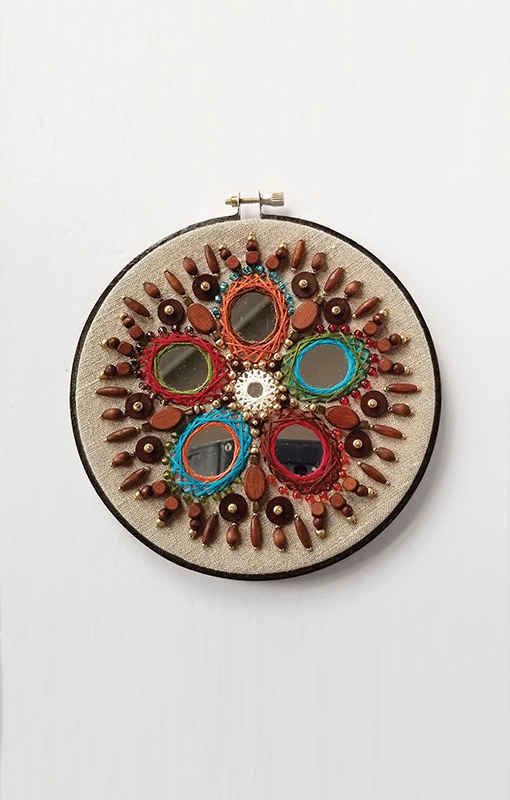Mirror work has been in vogue for centuries and is popularly known as “Sheesha” embroidery. This is an art form in which mirrors of various shapes are fixed on to the fabric through embroidery. In recent times however, mirrors have been replaced by reflective luminescent metal pieces of different shapes and sizes, particularly on apparel. Mirror work is used on various fabrics such as georgette, crepe, cotton, silk, chiffon and many more which are then turned into attractive apparel and accessories ranging from sarees, to cushion covers and belts.

History
Mirror work can brighten up a dull mono-colored fabric by producing a shimmering design that makes it more appealing. Sheesha or mirror embroidery is traced back to 17th century in Iran and it is said to have been brought to Indian through various travelers during the Mughal era. The mirrors are affixed on to the fabric by special cross stitch embroidery that encloses the mirror, and provides it a casing. This cross stitch embroidery is not only relegated to affixing the mirrors, but they are also used on the garment as well to enhance the overall appeal of it. Although the most popular shape of the mirror that is used commonly is circular, there are other geometrical shapes such as square, triangular, hexagonal and polygonal that are used for embroidery.
Mirror or Shisha embroidery as we find it today actually originated in the 17th century and was originally done by using Mica, which was later replaced by glass. The use of these decorative embellishments was inherited from Iran during the Mughal reign. However, surprisingly, the Mughal rulers did not wear clothes embellished with mirrors.

Influences over the Years
Mirror work has been patronized by designers all over the world in the form of fashion accessories. Matched with bright colored clothes, sheesha work embellishes a garment in different ways.
For instance, some designers choose to use mirrors of varying sizes and shapes to embellish their fabric, while others use tiny mirrors embroidered on to the yoke of the dress with multicolored threads. Mirror work is used to embellish and decorate a variety of items such as sarees, dresses, skirts, bags, cushion covers, bedspreads, wall hangings and many such items. The products not only have a great demand within Pakistan, but globally as well. Sheesha work products are always in vogue regardless of the occasion or the type of décor.

Interesting Facts and Comparisons
- Originally coins, beetle, tins and silver were used as elements to give that reflective effect on the fabric.
- The great Italian merchant traveler, Marco Polo was one of the secret admirers of mirror work embroidery.

